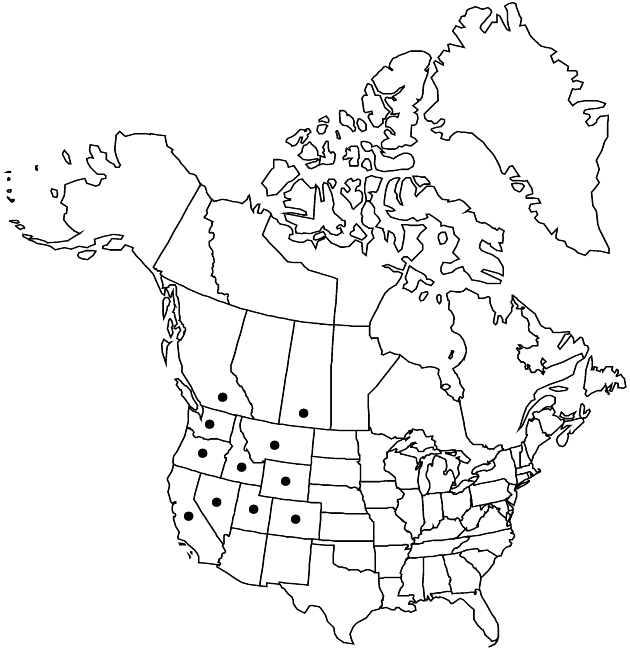Crepis occidentalis subsp. costata
Publ. Carnegie Inst. Wash. 504: 124. 1938.
Plants 8–40 cm. Stems tomentose, sometimes stipitate-glandular distally. Leaves 5–20 × 2–3.5 cm, pinnately lobed (lobes dentate; distal cauline stipitate-glandular and with large dark or black setae). Heads 15–30. Peduncles stipitate-glandular. Phyllaries 7–8, stipitate-glandular and with dark or black, glandular-setae. Florets 10–14. Cypselae golden brown. 2n = 44.
Phenology: Flowering Jun–Jul.
Habitat: Grassy banks, dry rocky hillsides, black shale or sandstone, juniper-oak woods
Elevation: 1200–2500 m
Distribution

B.C., Sask., Calif., Colo., Idaho, Mont., Nev., Oreg., Utah., Wash., Wyo.
Discussion
The major distinguishing characteristic of subsp. costata appears to be the relatively large, dark or black setae on the phyllaries. As defined by E. B. Babcock (1947), subsp. costata is a series of polyploid apomictic forms that are difficult to distinguish from subsp. occidentalis, as well as other species such as C. intermedia and C. bakeri. Reports for Arizona and South Dakota were not confirmed for this treatment.
Selected References
None.
Lower Taxa
"fine" is not a number."fine" is not a number.